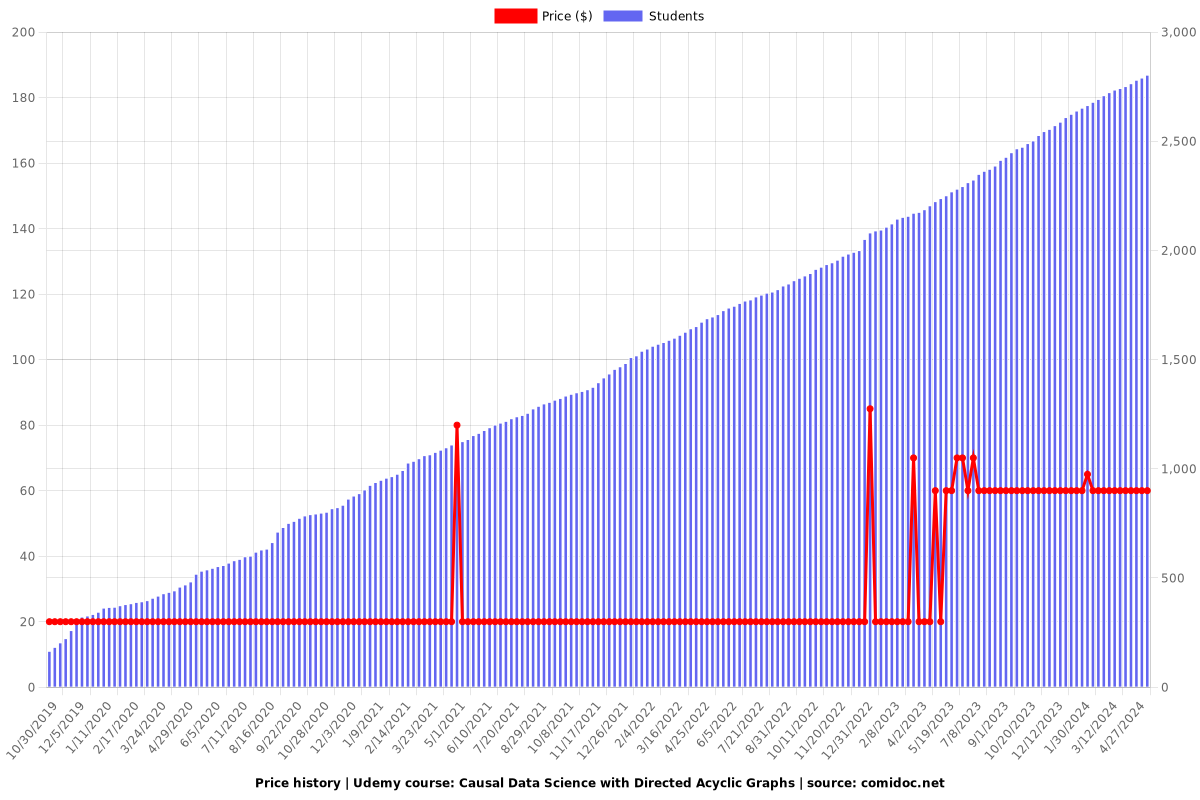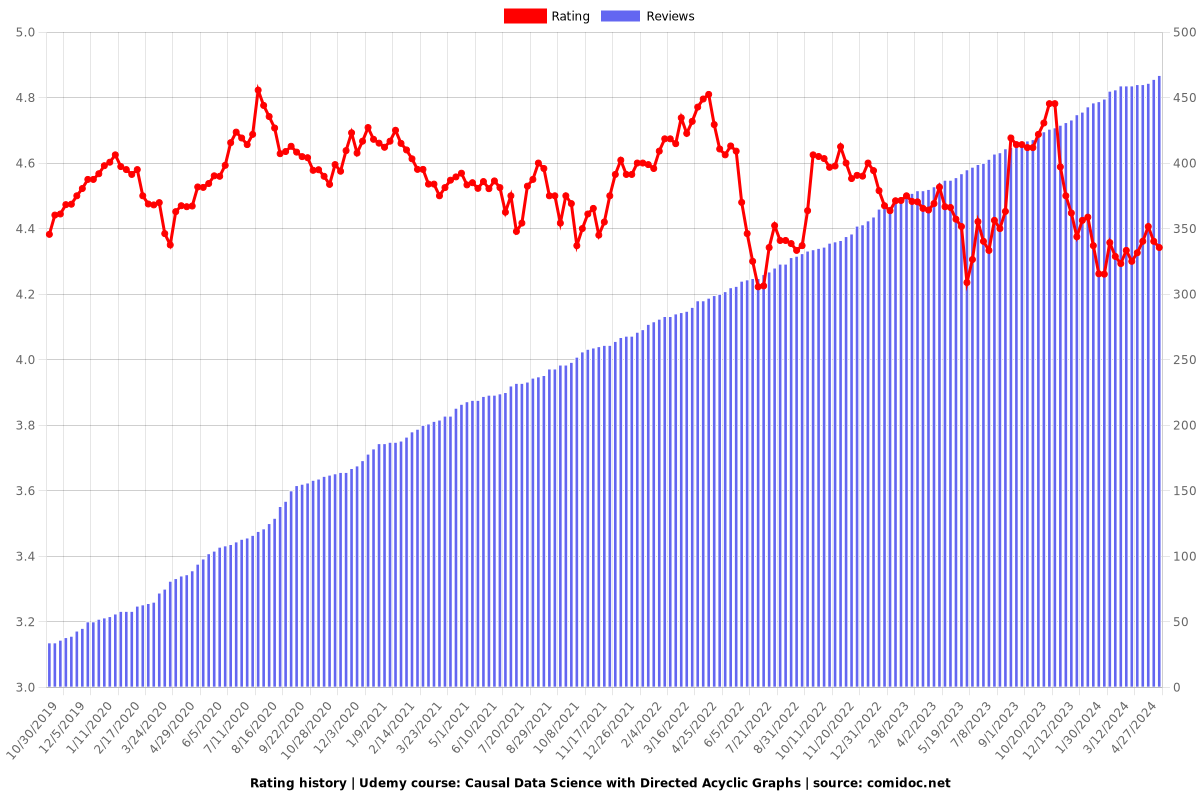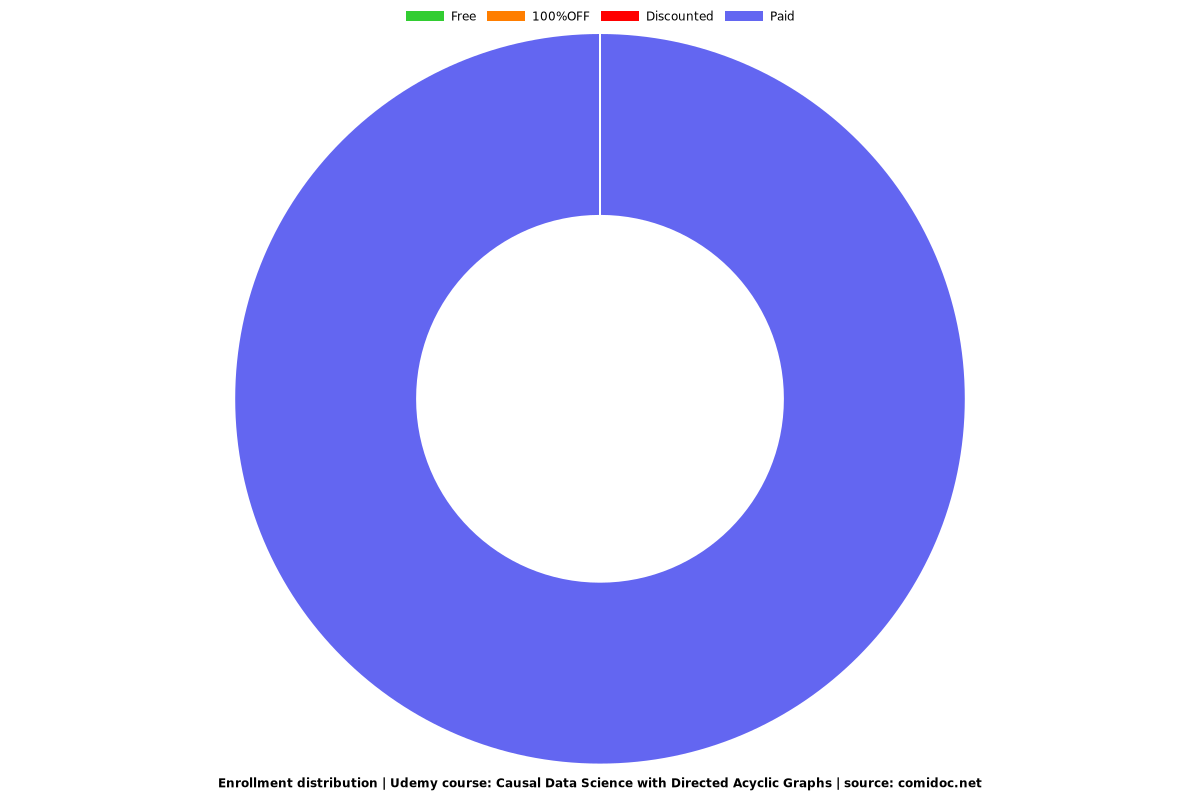Causal Data Science with Directed Acyclic Graphs
Get to know the modern tools for causal inference from machine learning and AI, with many practical examples in R
4.34 (467 reviews)

2,803
students
5 hours
content
Sep 2020
last update
$59.99
regular price
What you will learn
Causal inference in data science and machine learning
How to work with directed acylic graphs (DAG)
Newest developments in causal AI
Why take this course?
---
**Course Title:** Causal Data Science with Directed Acyclic Graphs
**Headline:** 🚀 **Master the Art of Causal Inference with Modern Tools in R!** 🎓
**Course Description:**
Dive into the fascinating world of **Causal Data Science** and uncover the secrets behind causal reasoning with our comprehensive online course. Led by the expert tutelage of **Paul Hünermund**, this course is designed to equip you with the essential skills and knowledge to understand and apply directed acyclic graphs (DAGs) for making inferences in real-world scenarios.
**What You'll Learn:**
- **Core Concepts**: Grasp the foundational principles of causal inference using DAGs, blending graph theory with probability.
- **Real-World Applications**: Explore how DAGs are applied across various fields, including machine learning, economics, finance, health sciences, and beyond.
- **Theoretical Advances**: Explore the latest developments in causal data science, a field that has evolved significantly over the past three decades.
- **Automation Techniques**: Learn about identification algorithms that can automate causal inference tasks, saving valuable time and resources.
- **Practical Skills**: Gain hands-on experience with R, a powerful statistical software, to apply your newfound knowledge to practical examples and case studies.
**Course Structure:**
1. **Introduction to Causal Reasoning**: Understand the basic concepts of causality and how DAGs represent them.
2. **DAG Components Explained**: Learn about nodes, edges, and the types of causal relationships they describe.
3. **Graphical Criteria for Causality**: Identify valid causal statements using intuitive graphical criteria.
4. **Automating Causal Inference**: Discover how to apply identification algorithms to automate the causal inference process.
5. **Case Studies with R**: Engage with a variety of practical examples that demonstrate the application of DAGs in real-world scenarios, all using R for data analysis and visualization.
**Why This Course?**
- **Interdisciplinary Approach**: This course is perfect for anyone from data scientists to researchers who want to integrate causal reasoning into their work.
- **No Prerequisites Needed**: While having a background in basic statistics and programming is beneficial, this course starts at ground zero for those with less experience.
- **Real-World Focus**: With an emphasis on practical applications, you'll be equipped to tackle complex causal issues in your field.
**Who Should Take This Course?**
- Data scientists and analysts seeking to incorporate causality into their analyses.
- Researchers and professionals from various fields who want to apply rigorous causal reasoning.
- Students of statistics, economics, or other social sciences looking to strengthen their methodological toolkit.
- Anyone interested in understanding the mechanisms behind data-driven decision making.
**Enroll Now to Transform Your Data Science Skills!** 🌟
Take the first step towards mastering causal data science with DAGs. Enhance your analytical capabilities and make informed decisions based on causal relationships in data. Sign up today and join a community of learners who are shaping the future of data-driven insights!
---
Our review
📚 **Course Overview:**
This online course offers a comprehensive introduction to causal inference, specifically focusing on Directed Acyclic Graphs (DAGs) and Structural Cause Models (SCMs). It is designed for learners who have some foundational knowledge of statistics and causal inference. The course material is well-structured and covers both theoretical aspects and practical applications using the R programming language.
**Pros:**
- 🎓 **Comprehensive Content:** The course effectively bridges the gap between introductory and intermediate topics, providing a solid foundation in causal inference.
- 🧩 **Structured Approach:** It is praised for its clear and concise explanations, with examples that reinforce theoretical concepts.
- 🤖 **Hands-On Practice:** Real-world scenarios are demonstrated, allowing learners to apply the concepts they've learned through simulation studies in R.
- 🚀 **Advanced Material:** The course challenges more advanced learners by introducing complex material towards the end, encouraging deeper understanding and exploration of topics after course completion.
- 📚 **Rich Resource:** It serves as an excellent starting point for further research and study on causal inference.
- 🌍 **Unique Offering:** As one of the few courses on causal inference available online, it has a near monopoly in this niche area.
- 🛠️ **R Examples:** The use of R for practical examples is highly commended for its effectiveness in demonstrating theoretical principles.
- 📊 **Numerical Examples:** Actual numerical examples are included, which help to visualize the theory of causal inference in action.
**Cons:**
- 📖 **Math Intensive:** The course is heavy on math notation, which may not be suitable for those allergic to such formats.
- 🤽 **Learning Curve:** For learners more familiar with Python, there might be a learning curve adapting to R programming language used in examples.
- 🔍 **Desire for Real Data Analysis:** Some users wish for more examples involving analysis using real data sets to better understand practical applications.
- 🧐 **Advanced Content for Beginners:** A recommendation is made for newcomers to take foundational courses on causal inference before jumping into this one.
- 🛠️ **Python vs R:** While R examples are beneficial, there have been requests for some Python examples as well.
- 📈 **Complexity in Do-Calculus Rules:** Some users suggest that the do-calculus rules could be explained with more detail for clearer understanding.
**Learner Feedback:**
The overall sentiment from course reviewers is very positive, with many expressing appreciation for the quality of content and the way the material is taught. The course is described as "awesome" and "much better than expected." Users also note that the motivating examples used throughout the course are effective in making key points clearer. Some learners suggest improvements, such as adding practical examples using real-life data sets for a more concrete understanding of how to apply concepts in the field.
**Final Thoughts:**
This course is highly recommended for individuals interested in gaining a deeper understanding of causal inference and who are comfortable with statistical theory and programming in R. It stands out as a valuable resource in an area where such educational materials are scarce, and it provides substantial content for those looking to delve into the complexities of causal DAGs and SCMs. While there is room for improvement, particularly in including examples that use real-world data sets, the course remains a top choice for learners in this domain.
Charts
Price

Rating

Enrollment distribution

Related Topics
2431646
udemy ID
6/26/2019
course created date
10/30/2019
course indexed date
Bot
course submited by